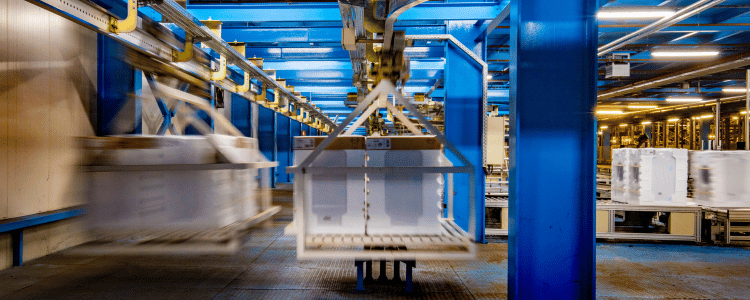
Intralogistics represents a critical component within the broader framework of supply chain management, focusing on the optimization and effective control of the internal processes related to the movement and storage of goods within a warehouse or distribution center. This term encapsulates a myriad of activities, from the receipt of goods to their storage, retrieval, and eventual shipment, all taking place within the confines of a single facility. Intralogistics is not merely about handling materials; it’s about smartly integrating operations, technology, and information to enhance efficiency, reduce costs, and improve the overall productivity of a warehouse or distribution center.
At the heart of intralogistics is the concept of automation and digitalization. The deployment of advanced technologies such as automated guided vehicles (AGVs), robotics, conveyor systems, and warehouse management systems (WMS) plays a pivotal role in streamlining operations. These technologies are designed to minimize manual handling, reduce errors, and increase the speed of operations from inbound to outbound processes. For instance, AGVs can transport goods across a facility without human intervention, while robotics can be used for picking and packing processes, significantly increasing throughput and accuracy.
Another cornerstone of effective intralogistics is the use of data analytics and real-time tracking. Through the integration of IoT devices and sophisticated software solutions, warehouse managers can gain valuable insights into their operations, allowing for real-time decision-making and proactive management of resources. This level of visibility enables the identification of bottlenecks, the optimization of inventory levels, and the efficient allocation of labor and machinery. Moreover, predictive analytics can be utilized to forecast demand, helping facilities to prepare for peak periods and ensure that they can meet customer expectations without overburdening resources.
Sustainability also plays a crucial role in modern intralogistics strategies. As businesses increasingly prioritize eco-friendly practices, the focus on reducing waste, lowering energy consumption, and minimizing the carbon footprint of logistics operations has intensified. This can involve the adoption of green technologies, such as energy-efficient lighting and machinery, the implementation of recycling programs, and the optimization of layouts and processes to reduce unnecessary movement and energy use.
The implementation of smart intralogistics solutions not only boosts operational efficiency but also enhances flexibility and scalability, enabling warehouses and distribution centers to adapt to changing market demands and business growth. As e-commerce continues to expand and customer expectations for speed and accuracy rise, the importance of intralogistics will only grow. Businesses that invest in advanced intralogistics systems and practices are well-positioned to gain a competitive edge, offering faster, more reliable service at lower costs.
In conclusion, intralogistics is a vital element of modern supply chain operations, emphasizing the importance of internal processes in achieving overall logistical success. By leveraging technology, data, and sustainable practices, companies can transform their warehouse and distribution operations, achieving greater efficiency, accuracy, and environmental responsibility. As the logistics landscape continues to evolve, the role of intralogistics in ensuring operational excellence and meeting the demands of tomorrow’s markets cannot be overstated.
Related Articles
3PL Returns Management Services and Problems They Can Help You Solve | February 1, 2024
Economic Operators Registration and Identification (EORI) Number | January 30, 2024
Understanding (DDP) Delivered Duty Paid Shipping | January 25, 2024
Make Your eCommerce Business More Efficient with Third-Party Logistics | January 20, 2024
What to Look for in a 3PL Company | January 18, 2024